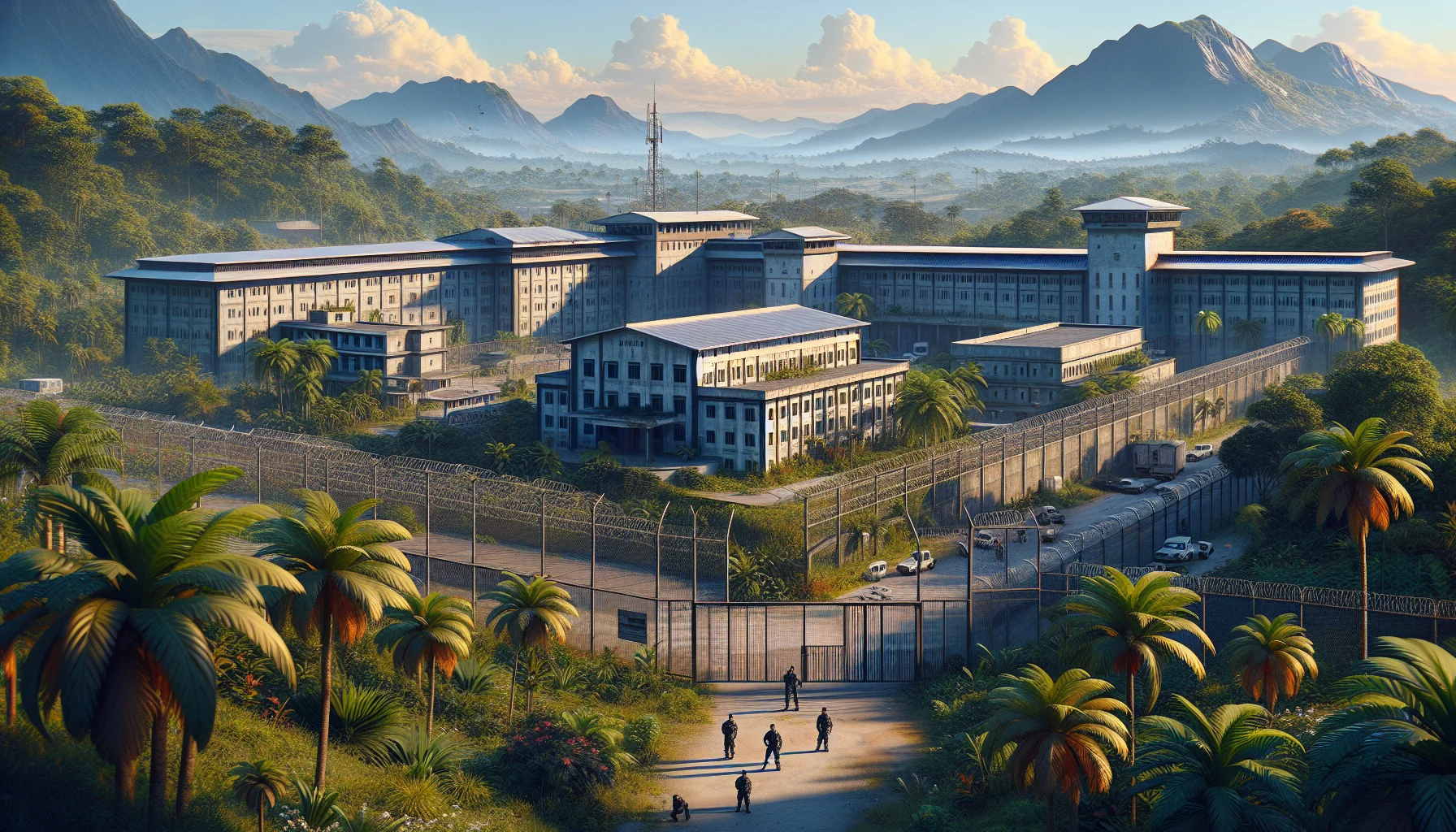
2013 Uribana Prison Riot
by: The Calamity Calendar Team
January 25, 2013
The Ticking Time Bomb: Uribana's Overcrowded Reality
Perched amid the tropical landscape of Lara State, Venezuela, Uribana Prison had become a pressure cooker ready to explode. In January 2013, what was meant to be a routine operation quickly devolved into one of the most tragic prison riots in Venezuelan history. Packed to nearly three times its capacity, the prison harbored around 2,500 inmates in a space meant for just 850. This overcrowding was a poignant reflection of the wider issues plagued by the Venezuelan prison system—a system severely lacking in resources, proper management, and sufficient security forces.
Tensions simmered beneath the surface, exacerbated by frequent violent confrontations between rival gangs inside the prison. The day of reckoning loomed when news broke that the Venezuelan authorities were planning an inspection to confiscate weapons and clean the premises. This plan was meant as a step toward restoring order within the chaotic prison walls. However, this well-intended mission was broadcasted in advance through media channels, inadvertently igniting the smoldering unrest among the inmates.
The Day of Turmoil: January 25, 2013
As dawn broke on January 25, 2013, the Uribana Prison was on high alert—a brewing storm about to unleash chaos. National Guard troops, along with officials from the Ministry of Prisons, arrived at the foreboding gates to carry out the inspection. The air was thick with tension and anticipation, echoing eerily through the corridors of the prison. On this fateful day, the balance between control and chaos would be brutally tested.
With the presence of authorities inside the prison, the volatile atmosphere quickly ignited into a full-blown riot. For inmates armed with smuggled firearms and makeshift weapons, resistance was not just a response; it was a desperate stand for their sense of autonomy. No sooner had the officials crossed the threshold than violence erupted, turning what should have been a calculated exercise into an uncontrollable melee.
Gunfire shattered the prison air, with the clash between inmates and guards resonating within and beyond the prison walls. The violent confrontation raged for hours—a battle that pitted inmates against guards in a desperate fight for dominance and survival. Reports would later reveal that the inmates had long had access to a cache of illicit weapons smuggled into the facility, transforming the prison into almost a battlefield.
A Grim Toll: Casualties and Consequences
By the time night fell, the air hung heavy with the grim silence of aftermath. Local and international media outlets swarmed to cover the grim reality—in total, 61 lives had been lost in the deadly chaos, a blend of inmates and prison officials. Alongside them, more than 120 individuals bore the scars of the tragic clash, some fighting for survival from grave injuries.
Thanks for subscribing!
The human toll was a harrowing wake-up call, highlighting the myriad failings not just within Uribana, but throughout the expansive Venezuelan penal system. As the dust settled, reflecting on the tragic loss and destruction, it was clear that the cost reached deeper than just financial implications—rapidly escalating into a profound, urgent call for reform.
Searching for Answers: Investigation and Reforms
With the eyes of the world on Venezuela, the government embarked on a journey of introspection and rectification. An investigation was announced rapidly, attempting to piece together the precursors and missteps leading to the riot. Efforts to restore order extended beyond immediate loss management, sparking initiatives aimed at addressing the roots of the penitentiary crisis.
In efforts to ease the burden on Uribana, authorities attempted to reduce overcrowding by relocating inmates to other facilities—a task monumental in scope given the limitations. The government also sought to implement measures aimed at tightening security and controlling contraband, though challenges emerged due to infrastructural and fiscal constraints.
The Persistent Struggle: Systemic Issues Remain
While the measures introduced post-riot aimed to curb immediate issues, deeper systemic problems within Venezuelan prisons have persisted. Reports of violence continued to emerge from these facilities, illuminating the enduring challenges to long-term reform. Inadequate resources, underqualified personnel, and persistent gang rivalries are hurdles that the country's penal system has continued to grapple with.
Amongst the clouds of ongoing struggles, international human rights organizations have persistently advocated for the need to reform the system, calling for humane conditions, enhanced oversight, and improved administrative frameworks. For Venezuela, the Uribana Prison Riot remains a pivotal moment in the national consciousness—more than just a past incident but a stark reminder of the urgent need for transformative change.
Reflections on a Tragedy: A Path Forward
The legacy of the Uribana Prison Riot resonates today, not just within the corridors of Venezuela’s penitentiaries, but as a symbol of the larger societal issues that breed inequality and unrest. The tragedy at Uribana was a pivotal moment, forcing a nation to confront the frailties of its prison system and urging policymakers to embark on a path of meaningful reform.
As the country continues to navigate a complex web of socio-political challenges, the drive towards better management, enhanced security, and respect for human rights remains essential. For the families and communities affected by the riot, healing is an ongoing process—with calls for justice and reform echoing as a testament to their resilience and determination to ensure such tragedies never repeat.
Stay in the Loop!
Become a Calamity Insider and get exclusive Calamity Calendar updates delivered straight to your inbox.
Thanks! You're now subscribed.